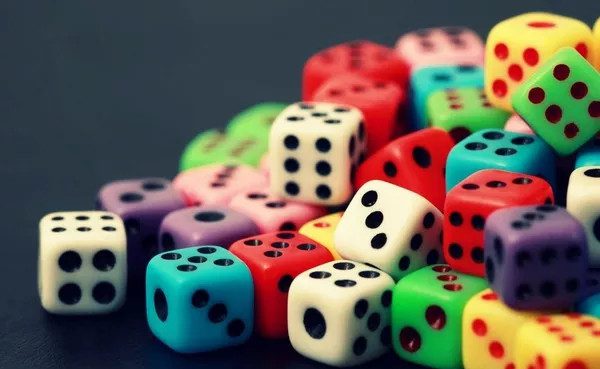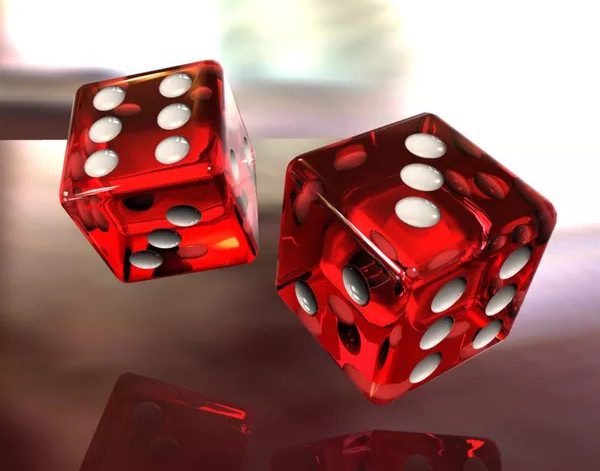Many people believe that the game of dice rolling is just a game of chance – but is that really the case?
The Probability Factor in Dice Rolling
There are many different types of dice: pyramid-shaped, 20-sided dice, etc., but we will focus on the most common type, the six-sided cube, marked from 1 to 6.

There are many different types of dice.
When you roll a six-sided die, there are 6 possible outcomes, each with a probability of 1/6.

When you roll a six-sided die, there are 6 possible outcomes.
But what happens when you roll two dice? Since each die has 6 faces, there will be a total of 6×6 = 36 possible outcomes. However, if we only consider the results (the sum of the two dice), we can analyze the following table:

Dice rolling probability table.
Looking at the table above, you can see that there are 6 possible outcomes that result in a total of 7, which is the most likely outcome. Broadening the scope, in games using two dice, the probability of rolling a total between 5 and 9 is up to 66.7%, as there are 24 outcomes that produce this result (24/36 = 66.67%).
Similarly, with dice that have more faces, we can calculate the possible outcomes based on the probability of rolling the dice. For this reason, many people tend to bet on results that are likely to occur more frequently.
Do Dice Really Land Randomly?
To clarify which factors determine the outcomes when rolling dice, Marcin Kapitaniak, a PhD candidate at the University of Aberdeen (Scotland), conducted research on rolling dice in three dimensions. They examined and evaluated the effects of gravity, air resistance, and friction on the table…

Friction with the table is also quite important when rolling dice.
The results indicated that the most important factor is… the initial position of the dice. However, Kapitaniak added: “Friction with the table is also quite important.”
Specifically, with a table that has high friction, the dice cannot slide easily and tend to bounce more, making the results more difficult to predict.

The initial position of the dice remains the most important factor.
However, the initial position of the dice remains the most important factor. According to observations from high-speed videos, even after bouncing multiple times, the dice still tend to land on the same result they initially showed. For example, if a die shows a face of one (1) facing up, the result will likely reflect that.
Does This Factor Compromise the Fairness of the Game?
Many believe that gamblers will use this knowledge to profit in casinos.
In reality, whether they want to or not, casinos cannot ensure that dice roll completely randomly 100% of the time.

Dice in casinos cannot guarantee 100% randomness.
Specifically, casinos often drill tiny holes into the sides of the dice to ensure that the weight of each face is equal, aiming for randomness. However, this factor is not sufficient, as the face that lands up when rolling the dice tends to show more frequently.
But Kapitaniak stated that this capability is very difficult to achieve, as players must accurately identify the initial position of the dice and know the precise surrounding factors. Therefore, the results of rolling the dice are still considered random.

The more bounces, the higher the randomness of the dice outcomes.
Additionally, Kapitaniak suggests that to increase fairness in the game, you can roll the dice on a surface with high friction. The more bounces that occur, the higher the randomness of the dice outcomes, although the factor of the face up when rolled remains the most crucial.
* This article reflects the views of researcher Marcin Kapitaniak as featured on Inside Science.




















































